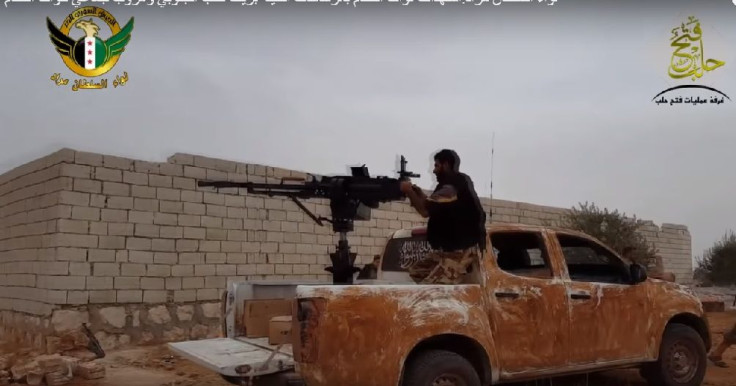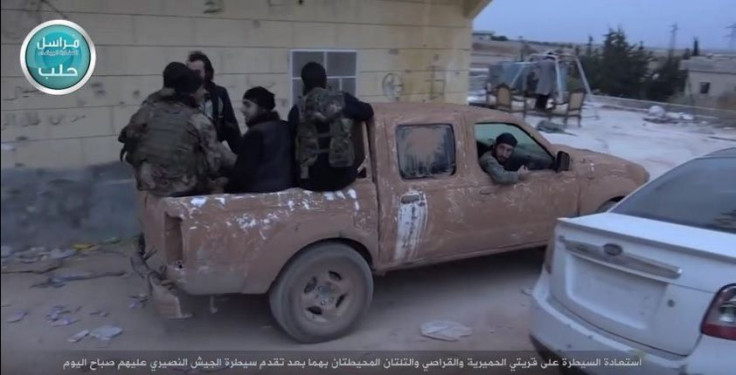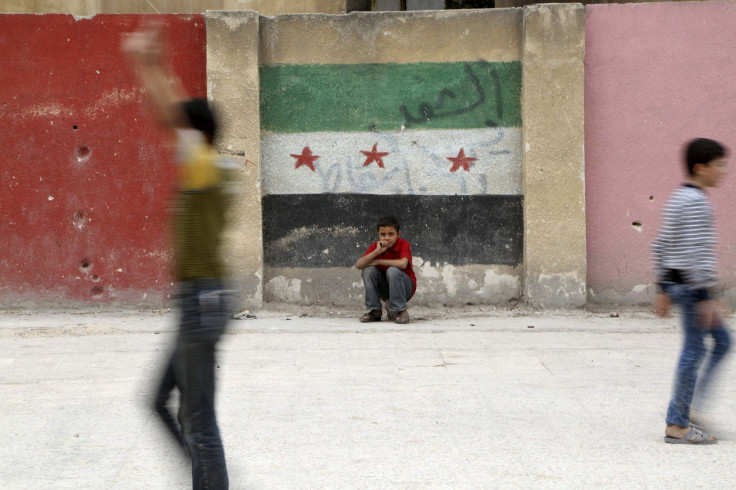Syrian Regime Makes Gains For Aleppo Supply Lines, Uniting ISIS, Jabhat Al-Nusra, Syrian Rebels

BEIRUT -- The Syrian regime is hoping it’s a case of fourth time lucky as they attempt to retake the northwestern province of Aleppo for the fourth time since the Syrian conflict started in March 2011. The operation has, with the help of Russian airstrikes, enabled forces loyal to President Bashar Assad to make some of their most significant gains.
If the regime claims a victory it will be all the sweeter for having taken so long. More than that, Aleppo, Syria’s largest city and formerly a thriving financial and industrial center, is of great strategic importance. The province is home to a main highway that connects supply routes from the country's eastern provinces to the western areas of Homs and Hama; whoever controls this region can gain direct supply routes to the rest of the country to bring in military reinforcements, access humanitarian aid and widen their trade routes.
“They don’t care too much about controlling villages. It’s more about supply lines and showing that they have control over all the main areas of the country,” a journalist in Aleppo, who asked to remain anonymous for safety reasons, told International Business Times.
Today the city is a melting pot of fighters, home to various Syrian rebel groups, the Islamic State group, al Qaeda affililate Jabhat al-Nusra and many different units fighting alongside the Syrian regime. Starting two weeks ago, the Syrian Arab Army and other forces loyal to Assad began a multiple-front operation: In the west, the Islamic State group, commonly known as ISIS, is battling pro-regime forces, in the east, pro-regime forces are fighting Jabhat al-Nusra and Syrian opposition group Ahrar al-Sham.

The pro-regime forces in the east and west are mostly Syrian fighters from the army or the National Defense Forces, all under the command of Syrian General Suhair al-Hassan. Al-Hassan led the Syrian army operation to take control of the main highway and break a siege in Aleppo in 2013. “He is like a legendary hero,” the journalist in Aleppo told IBT. “Whenever there is trouble the government uses him to achieve something good.”
In the past week, the battle has been heating up on the southern frontline. “[In the south] all people are mixing with each other. If we want to divide them on paper we will need 10 years,” the journalist said. “The enemies yesterday, which were ISIS and Nusra, now feel like they have a new enemy.”
The southern battle arena is populated by various Syrian rebel groups, including Harakat Nour al-Din al-Zenki -- one of the first rebel groups to be part of the U.S. train-and-equip program -- the First Regiment of the Free Syrian Army and the Sultan Murad Brigade, a Turkmen brigade with known anti-ISIS sentiment.
On the pro-regime side, the southern frontline has fighters from Lebanese Shiite armed group Hezbollah, Iraqi Shiite militias and multiple Iran-backed groups. These units are all under the control of Iranian military commander Sayyed Jawwad, Tehran’s main man in Aleppo and north Hama province.
The triple attack on Syrian opposition forces in Aleppo has pushed the Islamic State group and al Qaeda's Jabhat al-Nusra to coordinate attacks and even, in some cases, work with rebel groups they previously fought.
To halt pro-regime advances, last week Jabhat al-Nusra launched an attack on the western front from Bilal al-Hus mountain range. In a simultaneous operation, ISIS fighters attacked the eastern frontline targeting a major supply road in hopes of cutting off the regime’s reinforcements.
At the time, these attacks “both constricted the ability of pro-regime forces to deploy reinforcements to northern Syria and positioned ISIS to attack deeper into regime-held terrain north of Damascus,” according to a report from the Institute for the Study of War.

ISIS and Jabhat al-Nusra split in 2013 and have since occupied territory in different parts of Syria, allowing them to focus their military efforts on other enemy factions. When ISIS began its own offensive to seize territory in the north of Aleppo in June, Nusra was one of the main factions fighting the militants. That’s changed since Russia began bombing Syria, and Iran increased its presence in the country.
Nusra and ISIS are working together in Aleppo, not because of an ideological partnership between the two militant groups, but rather political expediency -- a temporary military alliance to survive the regime’s sizable attack on their individual territories, which “forced them to retreat under heavy airstrikes by Russian warplanes,” Mustafa Suleiman, a rebel fighter in Aleppo told ARA News.
The terrorist groups’ joint operation did initially set back pro-regime forces, but they’ve since bounced back. By Saturday, regime forces had attacked four ISIS positions on the eastern frontline along the main road to the west. In a separate but simultaneous operation, pro-regime forces seized several villages in the southern part of Aleppo from Nusra and Ahrar al-Sham.
After those attacks, pro-regime forces focused on another front line, signaling their confidence that a portion of the main supply route from Aleppo to the western provinces is safely under their control. On Sunday, pro-regime forces retook six towns and villages in the southern countryside of Aleppo. “We are determined to continue advancing in our offensive,” a Syrian army commander told Iranian news agency Press TV on the same day.
Sources in Aleppo who asked to remain anonymous, citing security concerns, said that ISIS now controls only around 20 kilometers (about 12 miles) of the road and that, barring any other surprise attacks, the regime would be in full control in the next three days.
For the people of Aleppo, who have faced near-constant fighting for more than four years, they will lose no matter which side wins. Without major supply lines open, more than 2 million people in the western part of the province have been living under siege without access to electricity, fuel, water and perishable foods.
The renewed military offensive has also brought a new wave of airstrikes on the city. From Friday to Saturday alone, at least 64 people were killed by Russian and Syrian airstrikes in Aleppo. Among the dead were 28 children, according to the Syrian Observatory for Human Rights.
“[Aleppo’s residents] are starting to lose hope that their country and city will return and to the normal situation,” the journalist said. “Not because of airstrikes but because they believe this battle has become an endless struggle.”
© Copyright IBTimes 2025. All rights reserved.






















